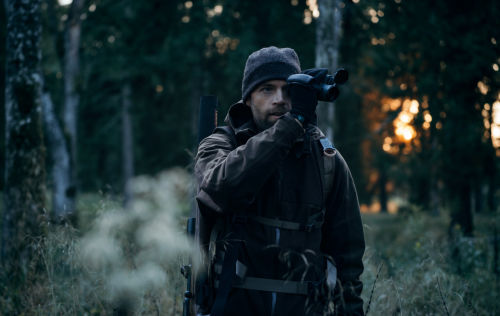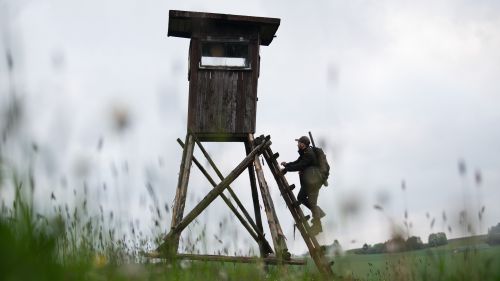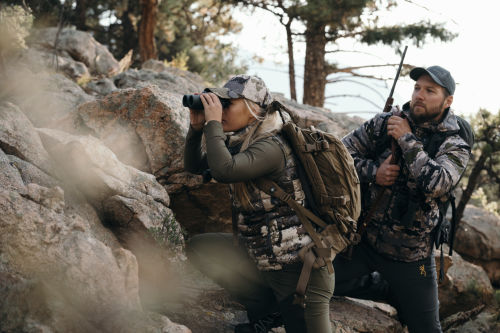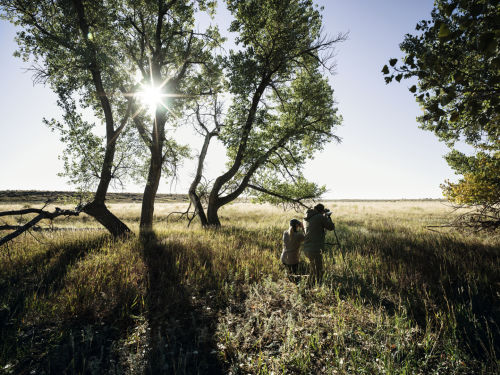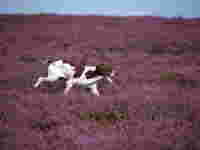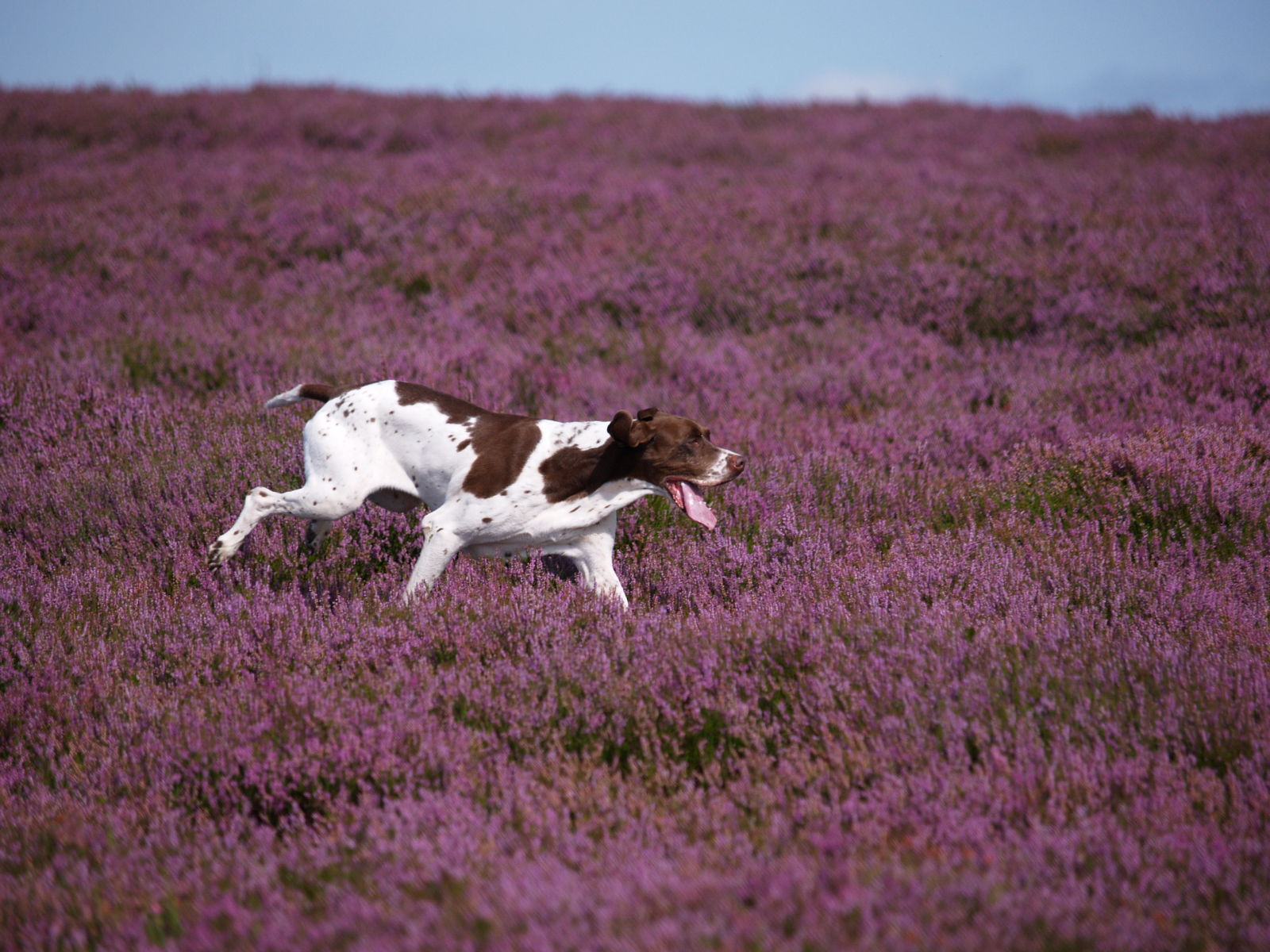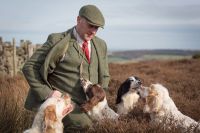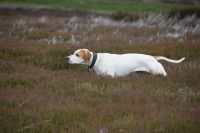Gundogs and humans are a team. In the United Kingdom shooting takes many different forms, but all of them require the assistance of gundogs. Let us take you on a stroll through the enchanting heather moorlands where spaniels flush red grouse.
Photos: Scott Wicking & Moorland Association
With 38 different gundog breeds officially recognised by the Kennel Club there is something for everyone. Whether you spend winter mornings huddled on the freezing foreshore waiting for the distinctive call of greylag geese, or you prefer glorious sunshine on heather-clad moorland in pursuit of glorious grouse, there is a breed for all occasions.
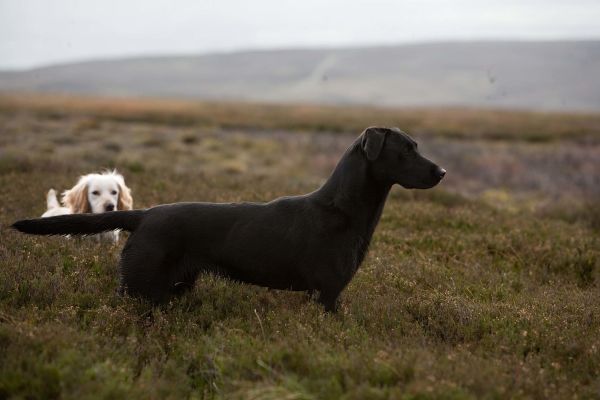
The rise of the HPR
hunt, point and retrieve breeds
In recent years there has been a surge in popularity of the hunt, point and retrieve breeds (HPRs), particularly for moorland sport. Scottish gamekeeper Fraser Kay said: “A lot of HPRs are used on grouse moors as the beaters tend to be spaced a lot further apart and vast areas of ground need to be covered. German shorthaired and wirehaired pointers, and vizslas tend to be more favourable as they have enough stamina to run all day and quarter over much larger areas of ground.”
In the lowlands driven pheasant and partridge shooting is most common. On these days typically there will be eight people shooting (Guns) and on average 20 other people (beaters) involved in flushing the birds and collecting the shot game with dogs (pickers-up). Gundogs are involved across the board, accompanying the stationary Guns, walking with the beaters, or at work in the picking-up line.
The most common breeds seen on these days are labrador retrievers and spaniels (cockers and springers) as well as the much-loved golden retriever, but it is possible to see up to 10 different breeds in action on any one day. Meanwhile wildfowlers and woodpigeon shooters use dogs for company on their solitary outings and for retrieving any wild birds they are skilful enough to harvest.
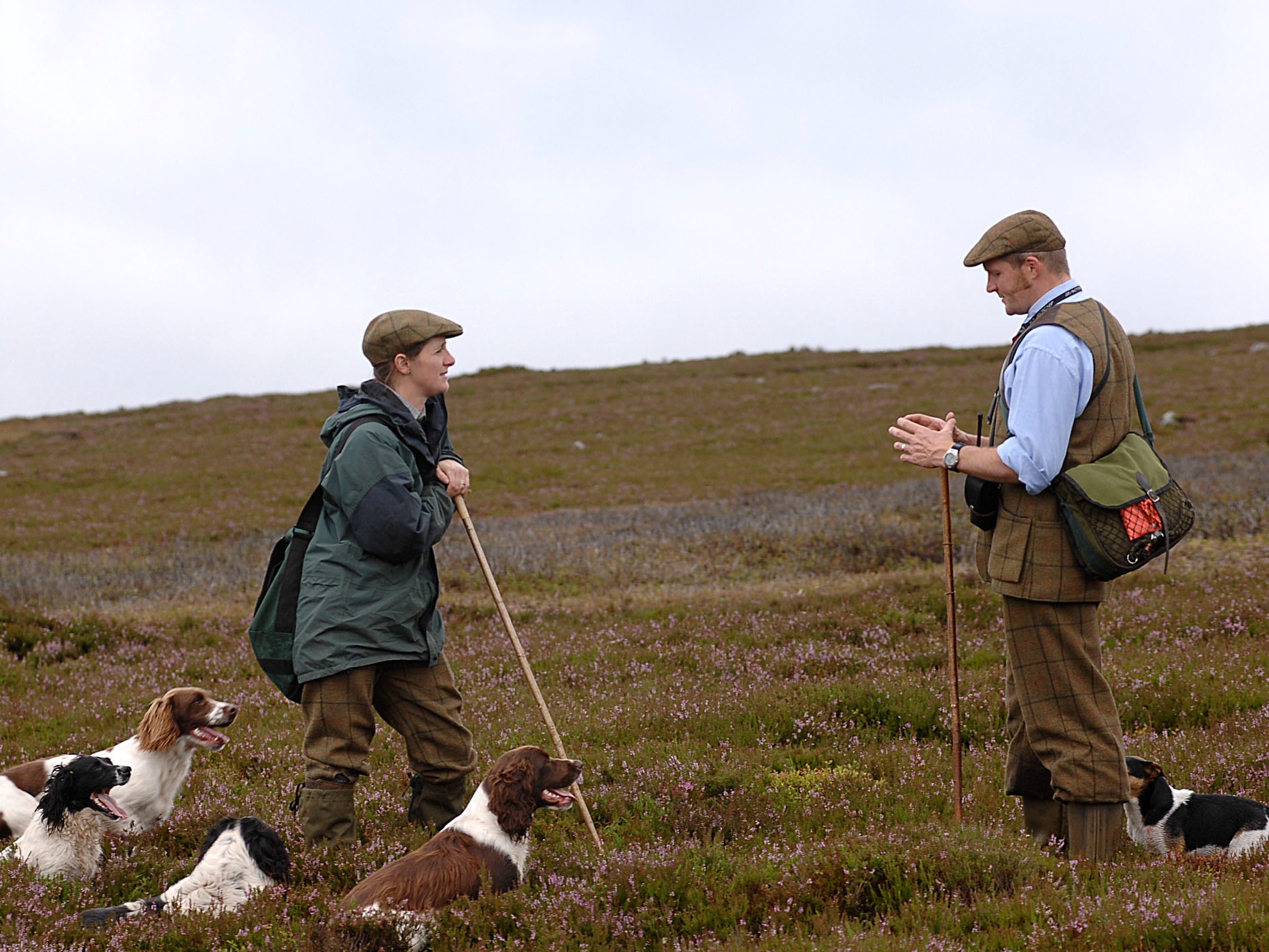
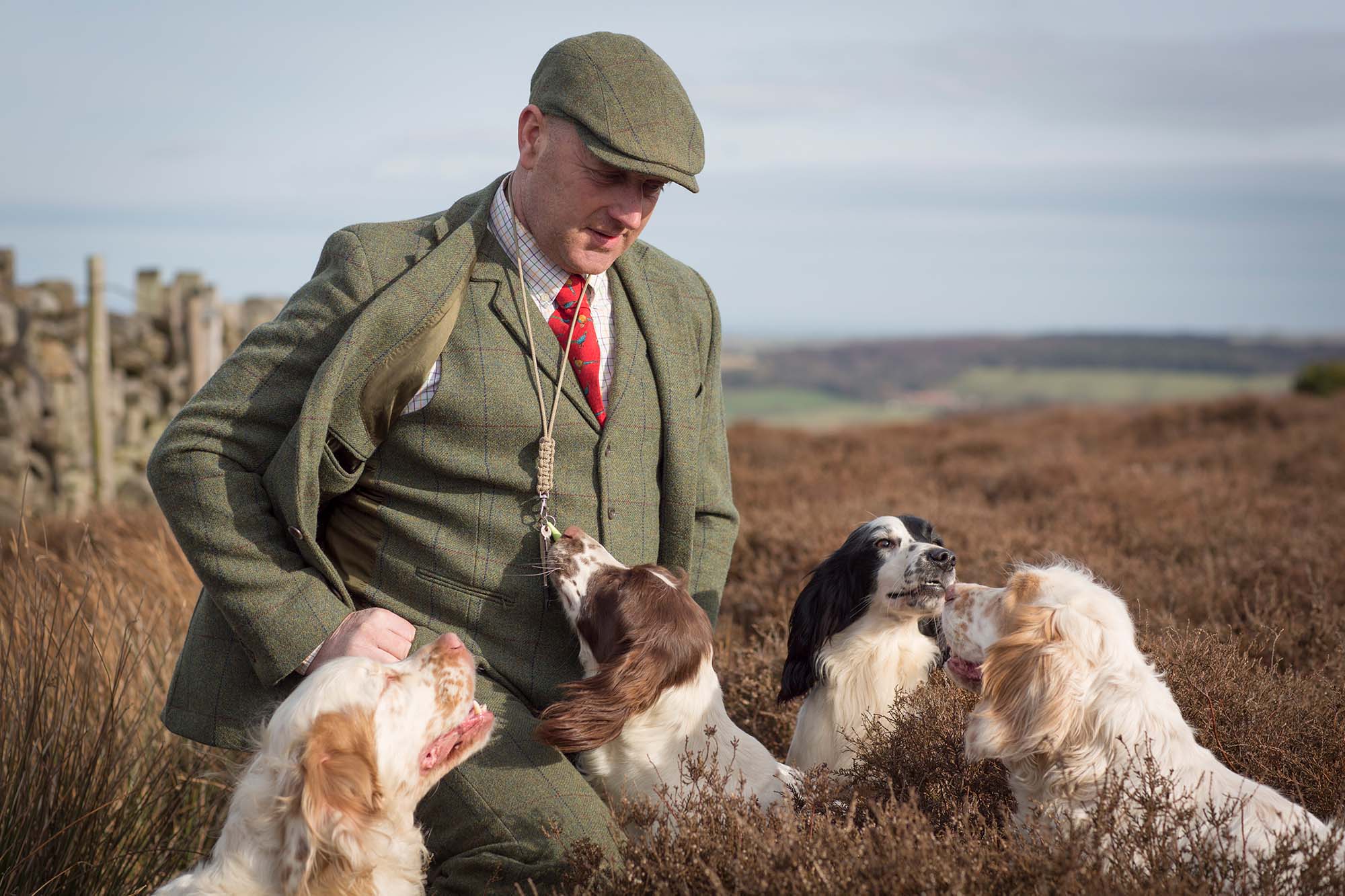
Glorious grouse
However, the heather moorland that adorns the uplands of England and Scotland is home to one of the most sought-after game birds in the world – the wild red grouse (lagopus lagopus scotica). With its reddish-brown plumage, black tail, white feet and distinctive red combs over the eye, this fast flying and delicious game bird is only found in the British Isles.
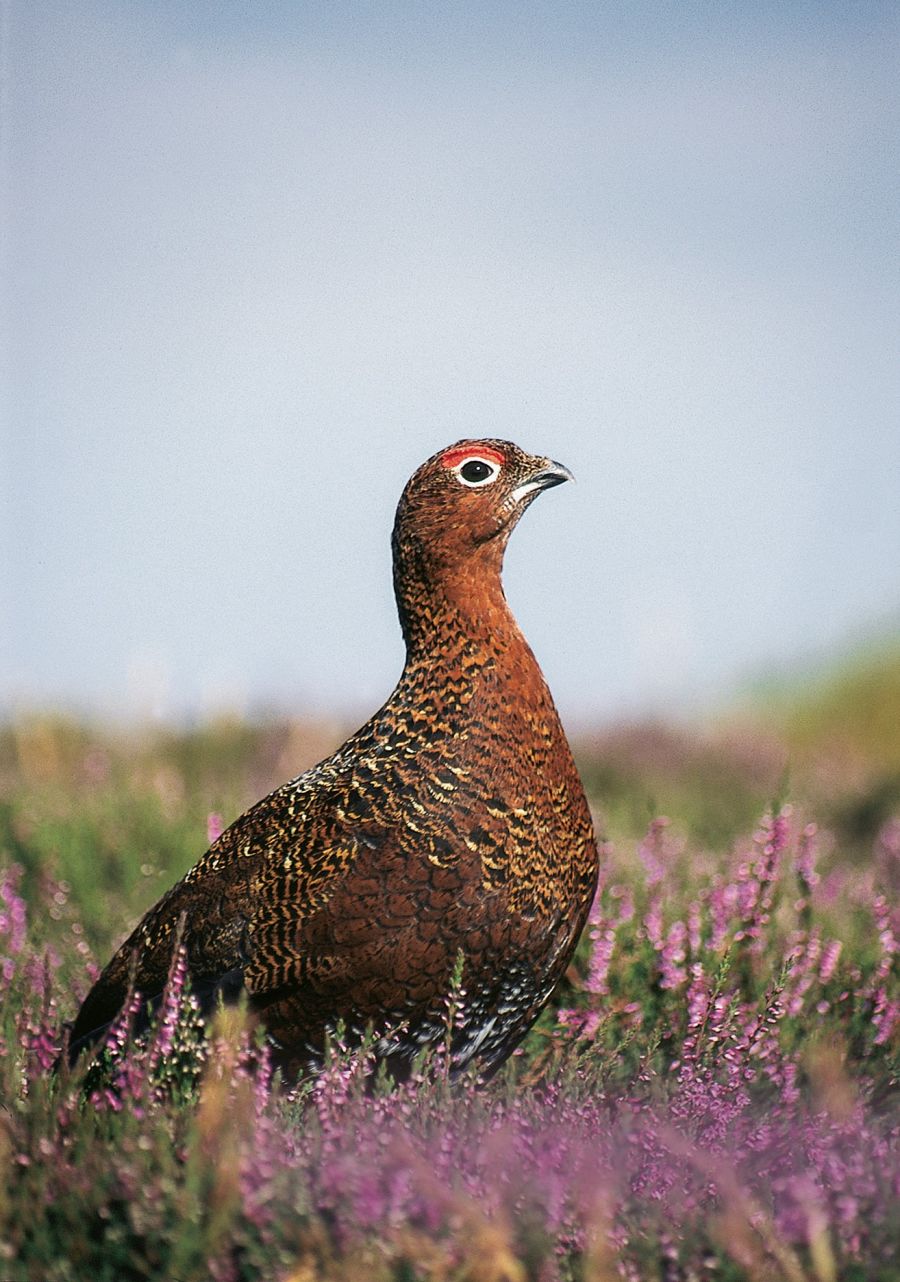

The word ‘moorland’ generally refers to open upland landscapes dominated by heather with no trees, which are managed as part of agricultural holdings or shooting estates. Around 75 per cent of Europe’s heather moorland is found in the UK. And to give an idea of scale the Moorland Association helps its members manage 348,000 hectares of heather moorland in England and Wales alone. Meanwhile in Scotland there are an astonishing three million hectares of moorland.
A lot of the moorland in the uplands of the UK is higher than 500m and the weather is often wet, cold, and windy - even in summer. Therefore, it takes a special type of vegetation to thrive here, and this is where the heather comes into its own. This evergreen shrub with twiggy stems naturally covers the open moorland. Heather plants tend to grow together, forming a thick, bushy carpet, sometimes up to half a metre tall and this helps it to survive strong winds.
And it is the heather which forms 90 per cent of the diet for the wild red grouse which eats the shoots, seeds, and flowers of the plant. This extraordinary game bird can fly at up to 80mph (130 km/h) and it is uniquely adapted to use the heather for protection from the elements and predators, as a breeding ground and for nutrition. It is the existence of the heather which allows for the existence of the red grouse.
Other birds which thrive in this environment include waders such as curlew, lapwing and redshank and birds of prey like the merlin and hen harrier. The nectar from heather flowers also makes delicious honey, and beekeepers often take their hives on to the moor in late summer when the heather comes into glorious purple bloom.
SEE FOR YOURSELF
Are you planning your trip to the amazing heather moorlands? Here, we share some insider tips about the Yorkshire Dales, famous pubs, sporting estates, as well as dining locations and accommodations:
Stylish animals in breath-taking landscapes
While labradors and spaniels are common on the grouse moors for formal driven shooting days, other breeds are inextricably linked to this most traditional of country pursuits. Pointers and setters have always been used for grouse shooting and these elegant and graceful dogs have all the attributes to succeed in this difficult terrain. With long legs and slender frames, they are almost purpose-built to cope with hard days on the heather-clad hill. They use their ultra-sensitive noses to scent their quarry from a long way out and go on ‘point’ when they do.
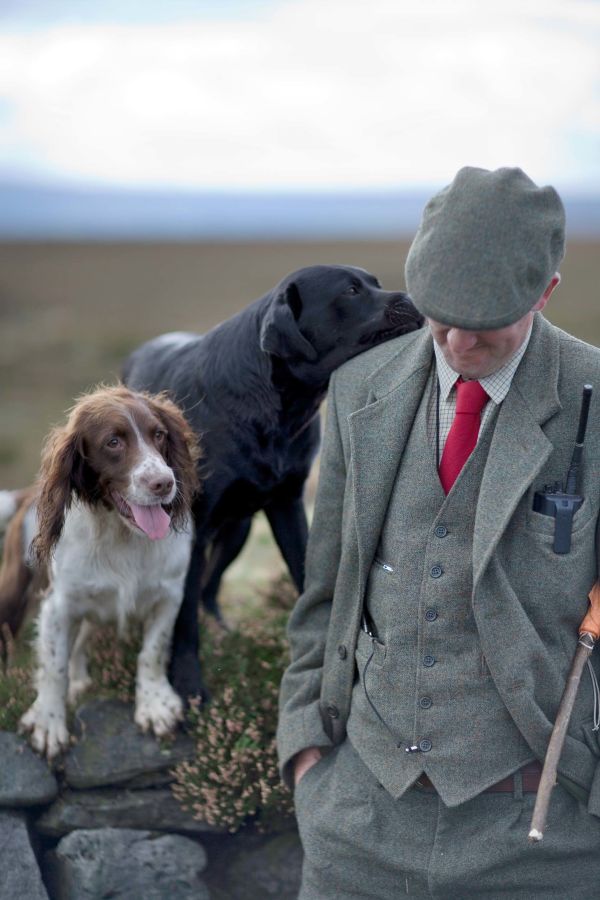
Lost in
translation
In the UK, the terminology around shooting and hunting is different from the rest of the world so to clarify:
Hunting
In the UK this generally refers to the traditional country pursuit of fox hunting, normally undertaken by smartly dressed people on horseback and a pack of hounds in pursuit of a fox. The hunting of wild mammals with dogs in this manner was banned by the Hunting Act 2004, but hunting can still take place chasing a scent rather than a live animal.
Shooting
In the UK this refers to game bird shooting. Typical quarry species are pheasant, partridge and grouse. Shooting also covers wildfowling (duck and geese) and wild woodpigeon shooting.
Stalking
This is the word used to describe the pursuit of deer with a rifle in the UK. Something the rest of the world would call hunting.
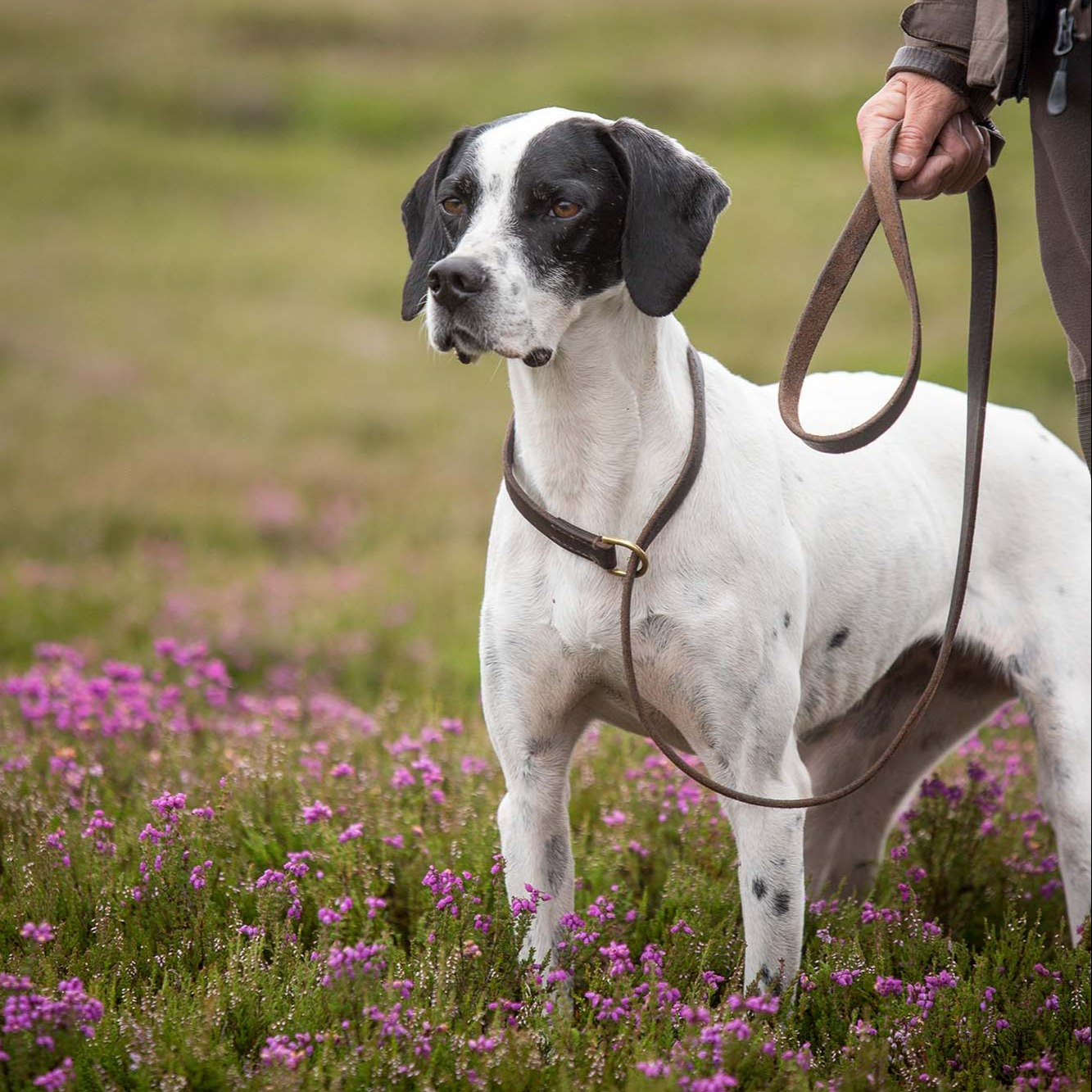

Shooting grouse over pointers and setters is generally considered to be one of the most rewarding and enjoyable ways of hunting. It involves a whole day of walking across the notoriously springy heather. To many it is the ultimate example of human and dog working together to harvest a wild, sustainable, and delicious game bird in truly dramatic scenery.
Jon Kean, a well-known Scottish advocate of pointers and setters, said of the pointer and setter breeds: “Apart from their magnificent appearance, they have the wonderful asset of fulfilling a role they have been bred for over many generations. And what could be more satisfying in a sporting sense than to work with these stylish animals in some of the most breath-taking landscapes of the British Isles in search of the King of the game birds?”
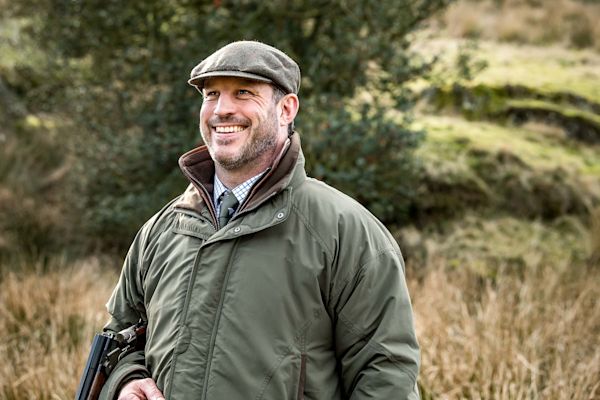
About the author:
Will Hetherington
Will Hetherington has been immersed in British country sports journalism for 22 years. He was editor of Shooting Gazette for 13 years, between 2004 and 2017, and is now a freelance editor and writer. One of his main roles is editor of Gundog Journal, a world leading bi-monthly gundog title published by Fieldsports Press. With two faithful labradors constantly by his side, he understands the companionship the gundog breeds offer, whether in the field in pursuit of winged game or relaxing at home with the fire lit and a glass of red wine to hand.
